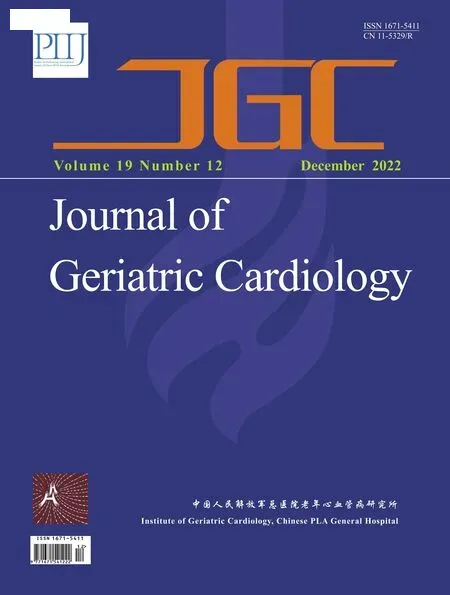Point-of-care ultrasonography in geriatric medicine: usefulness for approaching infectious endocarditis diagnosis
Pablo Solla, Patricia Cancelo, Eva López, Jesús de la Hera, César Morís, José Gutiérrez,2
1. Geriatrics Department, Geriatrics Clinical Management Area, Hospital Monte Naranco, Oviedo, Spain; 2. Health Research Institute of Asturias, Oviedo, Spain; 3. Cardiology Department, Cardiac Area, Hospital Universitario Central de Asturias, Oviedo, Spain
Infective endocarditis has a high morbimortality rate, and delay in diagnosis and treatment is associated with a higher prevalence of complications. The clinical presentation is often atypical in older adults, and even when the classic symptoms are present, they may overlap with those of other conditions, making management more difficult.We present the case of a nonagenarian in whom cardiac-centered point-of-care ultrasound facilitated real-time decision making and the diagnosis of mitral endocarditis.
We present the case of a 94-year-old man, independent in basic activities of daily living. Informed consent for publication of their clinical details and clinical images was obtained from the proxy. His past medical history only included hypertension and occipital hemorrhage without sequelae. He originally came to the Emergency Department for otorrhea, being diagnosed with acute otitis media and treated with amoxicillin clavulanic. Blood cultures were extracted due to fever, subsequently positive for methicillin-resistant Staphylococcus aureus. Two days later, he came back due to the persistence of fever, presenting III/VI systolic aortic murmur, bilateral crackles, and pitting edema. He was admitted to the Acute Geriatric Unit,where the echocardioscopy (Figure 1) showed left ventricular hypertrophy with preserved ejection fraction,dilated left auricle, hyperechogenic mitral valve with thickening at the level of the anterior leaflet, hyperechogenic aortic valve, and dilatation of inferior vena cava.
Given this finding, treatment with vancomycin, diuretics and oxygen were started, and a comprehensive echocardiography was requested from the Cardiology Department (Figure 1). It detected a normally sized left ventricle with mild hypertrophy and normal systolic function (56%). The right ventricle, with systolic dysfunction, was normally sized. Atriums were dilated, especially the left one. The aortic valve(trivalve) and mitral valve showed degeneration (moderate double aortic lesion and mitral valve insufficiency). A perforated mass, strongly suggestive of vegetation, in the left coronary leaflet, was observed;with possible affectation of the mitral-aortic junction and anterior mitral leaflet. In addition, tricuspid regurgitation, and mild pericardial effusion (predominately at the level of the posterior face of the right auricle, without echocardiographic compromise) were found.

Figure 1 Cardiac-centered point-of-care ultrasound, performed by the Geriatrician (A) and comprehensive echocardiography, performed by the Cardiologist (B).
The transthoracic echocardiography demonstrated mitral infectious endocarditis (IE) complicated with heart failure (HF). Surgical treatment was discouraged by the Heart Team, so transesophageal echocardiography was not performed. Due to the rapid progression of the disease, antibiotic therapy was rotated to daptomycin. However, the clinical evolution was unfavorable, and the patient died two weeks later due to HF.
Point-of-care ultrasonography improves diagnostic accuracy through immediate clinical capture, interpretation, and integration of ultrasound images by the clinician.[1]Focused on the heart echocardioscopy or basic echocardiography, it constitutes a very useful diagnostic tool for cardiologists, geriatricians and other specialists.[2]
Additionally, IE has high morbimortality and increasing complexity given the rise of antibiotic resistances and aging in the population. The first clinical suspicion of IE is the appearance of a heart murmur in a patient with fever, and the diagnosis is based on modified Duke criteria. Together with blood cultures, the echocardiography constitutes a keystone in its diagnosis. Vegetations, abscesses, pseudoaneurysms, fistulas or the perforation/aneurysm of a valve leaflet, are some echocardiographic findings suggestive of IE.[3]Older patients frequently present a poor acoustic window with multiple and small vegetations, so as a higher rate of comorbidities that may lead to an atypical clinical presentation. This contributes to a more difficult diagnosis and implies a higher risk for severe complications, increasing mortality rates.[4]
This case strengthens the evidence supporting cardiac-centered point-of-care ultrasound as a useful tool for the early diagnosis, real-time decision making, and follow-up of heart diseases. With specific objectives,it may be very helpful, particularly so in the management of HF. Recognizing its limitations despite not being performed by a cardiologist, it offers an extremely valuable non-invasive extension of a routine cardiological evaluation.[5]If the geriatrician has sufficient training and experience in cardiac ultrasound and there is an adequate coordination with the Cardiology Department, image sharing can support the diagnosis and facilitate the management of more complex entities such as IE by an early performance of a comprehensive echocardiography.
ACKNOWLEDGMENTS
All authors had no conflicts of interest to disclose.
 Journal of Geriatric Cardiology2022年12期
Journal of Geriatric Cardiology2022年12期
- Journal of Geriatric Cardiology的其它文章
- Unplanned J-valve implantation during open heart surgery for severe valvular annulus and ventricle calcification
- Fragmented QRS complex with an additional R-wave attenuated by short RR interval in a patient with acute pulmonary embolism and cardiogenic shock
- Aortic valve leaflet disruption techniques in transcatheter aortic valve replacement
- Mild haemoglobin drop and clinical outcomes in acute coronary syndrome patients: finding from the BleeMACS registry
- Electrocardiogram-based artificial intelligence for the diagnosis of heart failure: a systematic review and meta-analysis
- Development and validation of a nomogram predicting oneyear mortality in patients undergoing percutaneous coronary intervention
